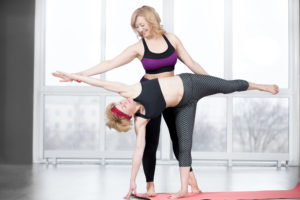What is Yoga Nidra?
Yoga Nidra has also been termed as Yogic Sleep; it is a conducted systematic mediation that takes you to that spot between wakefulness and sleeping; a profound state of rest. It can often feel like that method of ‘falling asleep’.
The Meaning of Meditation
It’s just a method of quieting the mind and achieving self-awareness applying a variety of techniques for working with the account. Although much stuff in life might be beyond human limitation, it’s entirely possible to have much more power over our minds: what we think, feel and perceive about us and others as well. Buddhist meditation shows us that getting a charge of our minds is the most significant human task. It’s the perfect remedy to help us deal with personal worries, fears, confusions, griefs, and concerns that come against us every so often. In Zen Buddhism, there is a famous analogy by Suzuki Roshi: your thoughts are like cows, give them a big field to feed, but watch them. Slowly they will calm down.
What’s the difference in yoga nidra and a guided meditation?
Yoga Nidra is a single type of guided meditation. According to Fishman, a yoga nidra session is typically 30 minutes long—any shorter isn’t long entirely to enter a parasympathetic state and any longer than 45 minutes can be admitted as an advanced practice. Dr. Miller explains the following steps as “sheaths” of being, which are named “koshas” in the biblical yogic texts. Before moving into the practice of bringing awareness to each one of these states, it’s beneficial if the practitioner commences the stage with an intention and a desire. That intention is called a “Sankalpa” in Sanskrit, and once you settle on it, it should be kept at the fore of your mind, perpetually in the present tense. The second step is to classify what you sincerely want for yourself and others. Then the mentor will lead you through a series of queries related to each one of the sheaths above. Here’s what a regular flow looks like:
Set your aim.
Feel your desire for yourself and others.
#1: Physical body
Sense and perceive your physical body and arrive in the present moment by doing a body scan.
#2: Energetic body
Count breaths, elongate breaths, and experience the sensation that arises from the breath work. This raises awareness of where energy is stuck and where it’s flowing.
#3: Emotional body
Invite the polarity of opposite feelings and sensations into your practice, like warm and cold, left and right, safety and fear. Often we experience emotions on this polarity: For example, someone living in fear desires protection. Yoga Nidra teaches us that we don’t need the positive end of the polarity to be comfortable, safe, fearless, joyous, and vulnerable. The body of intellect: Notice thoughts, beliefs, and images that occur in the guided exploration of contrasts. They offer insight into your long-held belief ways and clarify why we are the way we are.
The body of pleasure: Evoking memories that are pure joy and at ease helps reset a mental baseline and can relieve anxiety levels while giving an ever-present sense of calm.
#4: The body of ego
Through guided mantra and meditation, become aware of the eyewitness inside us all and check and recheck your ego.
Natural phase
Realize the power of the mind to expedite emotions from an inner and outer state. This helps bring awareness of our inner witness, the consciousness inside each one of us that’s outlasted the same since we can remember. In this state, we recall the intention and desire set at the start of practice and integrate them with our re-patterned awareness before reaching out of the meditation.
Benefits of Yoga Nidra
Anyone Can Do Yoga Nidra
Deep vinyasa flows and lasting asana holds are not for everyone. Yoga Nidra, despite, is a method that everyone, from babies to superiors, can do. Following at any age is natural. All that your body requires to do is lie down on the carpet. Moreover, even if you can’t lie down on the ground, you can still do this exercise seated.
You Cannot Exercise Yoga Nidra Wrongly
As you lie downward, stay in savasana, all you have to do is obey the voice that is leading you. It’s likely that you will recognize specific pieces of the meditation and not others. Every time you come to the exercise you face a new experience—none of which is incorrect.
Yoga Nidra Is Simple to Include in our Regular Life
Seated meditation can be frustrating—striving to clear the mind, bring consciousness back to the breathing, or find inspiration for directing. Yoga Nidra is always escorted, so there is no profound reasoning or wondering why you are gazing at a blank wall. A yoga Nidra exercise can be as little as five minutes and as large as an hour.
It’s an Easy Way to Overcome Stress
Yoga Nidra supports deep rest that isn’t found in your usual meditation method. The states of the body scan and breath consciousness alone can be followed to calm the nervous system. Thus, leading to less anxiety and more significant health.
Know Yourself Intimately
Yoga Nidra proposes a space to explore what you want in the moment, as well as a chance to work on discharging long-held sensations. During yoga nidra, you can find a feeling and come “face to face” with what you want to overcome, outwardly “diving into it”entirely—meaning without sensing the emotion so much that you become overwhelmed. Over time, you will proceed to experience the enthusiasm and associated responses, moving deeper into the exercise.
Now you know! Yoga Nidra is an approachable meditation exercise that concentrates on cultivating various levels of well-being. Trained with persistence and awareness, you may likely find that you can find an enormous amount of peace in a short span of time.
No Prep Yoga Plans for yoga teachers provides all the tools you need to create a holistic yoga class in minutes.





